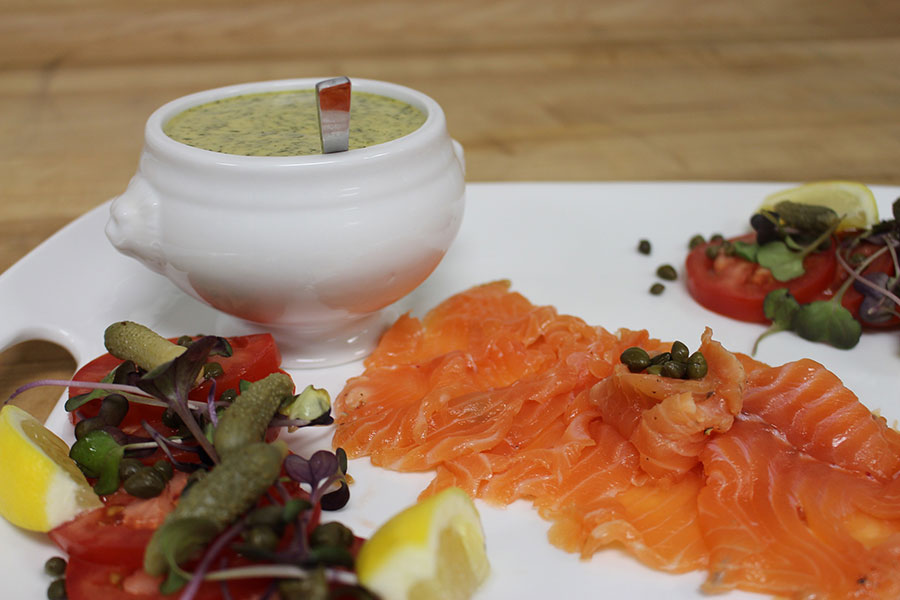As spring begins in Montana, I am putting my soup and stew recipes back on the shelf and replacing them with sunny-day recipes. One of my favorite warm weather dishes is gravlax, a dish made of cured salmon. Gravlax has been around since the Middle Ages when fishermen would lightly salt the fish and then bury it in the sand to ferment. Today gravlax is made by “burying” the fish in salt for the curing process. Gravlax can be eaten many ways: on rye bread with mustard sauce, on a bagel with cream cheese or all by itself.
- Salmon fillet, washed and patted dry
- 1/8 cup salt
- 1/4 cup sugar
- 1 Tbsp. crushed peppercorns
- 1 bunch fresh dill
Combine the salt, sugar, and peppercorns together. Tear off a piece of foil big enough to wrap the fish. Place the dill on the foil, spread it out to the size of the fillet. Place the salmon fillet, skin side down, on the dill.
Spread the salt mixture on the meat side of the fillet. Don’t be afraid to use your hands to press the salt on the meat so it stays. Wrap the fillet in the foil. You should not be able to see any salmon once it is wrapped.
Place the fillet in a baking dish and weigh it down with a heavy board. You can use a cutting board and a brick if you need to.
Refrigerate for at least two days. Turn the fish over every 12 hours so the juices can rotate around the fish.
Remove the gravlax from the refrigerator and wipe off all of the seasonings and dill. Slice the salmon on a diagonal.
Serve with mustard sauce (recipe below) and rye bread.
Mustard Sauce:
- 1/2 cup Dijon mustard
- 1/2 tsp. dried mustard
- 2 Tbsp. sugar
- 2 Tbsp. white wine vinegar
- 2 Tbsp. white wine
- 1/4 cup olive oil
- 1/4 cup vegetable oil
- 1/4 cup fresh dill
Combine the mustards, sugar, vinegar and wine. Slowly whisk in the oil until emulsified. Fold in the dill.
Michaella Irlbeck is an Instructional Assistant at the The Culinary Institute of Montana at Flathead Valley Community College. For more information about the program, visit www.culinaryinstituteofmt.com.
